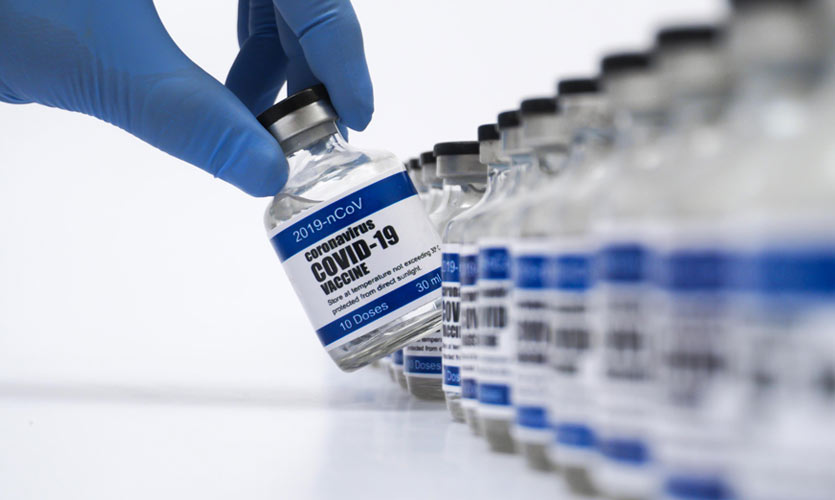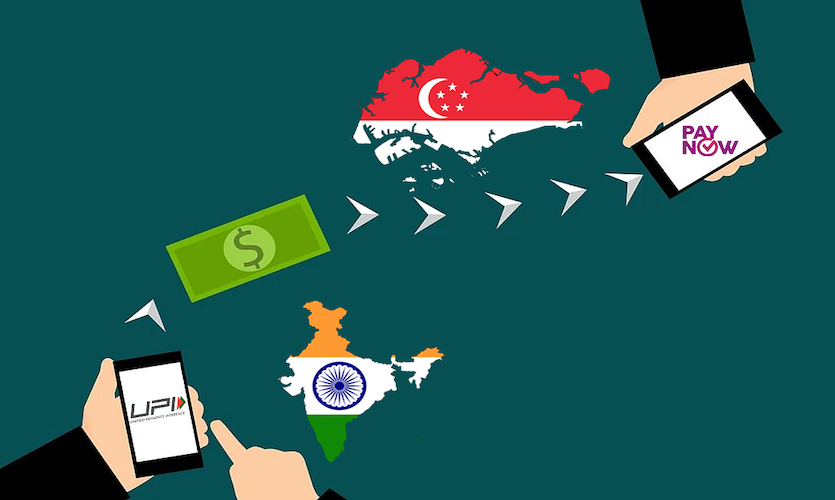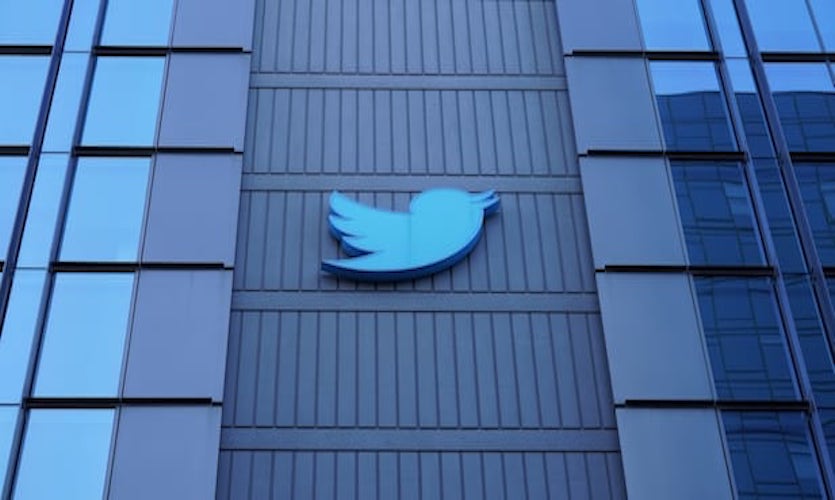The World Health Organisation (WHO) has time and again stressed on the importance of immunisation of at least 70 percent of the population. Universal vaccination has always been a largely agreed upon key strategy to ending the pandemic. Not too long ago, people’s hopes were dampened over the fact that vaccine development takes close to 10-15 years on average. However, within just 10 months of the pandemic, the US government gave the Emergency Use Authorization (EUA) to Moderna and Pfizer vaccines.
Without the Food and Drug Administration (FDA) approval and just the announcement of the positive results from phase three trial, the Pfizer vaccine developed in partnership with German biotech outfit BioNTech saw its shares gain 11 percent, while BioNTech rose by 12 percent. At present there are 20 vaccines approved by at least one country with 23.8 percent of the world population being given at least one dose of a COVID-19 vaccine. The current pandemic has drawn attention to the vaccine industry which was a previously ignored business model.
The Evolution Of The Vaccine Business Model
The vaccine business had been relatively small and not as profitable when compared to the big money that the pharmaceutical industry makes from daily drug treatments used to treat chronic conditions. When compared to the drugs that require daily doses, vaccines are predominantly a once in a year or a lifetime affair.
The last 20 years, however, have seen a dramatic change due to increase in demand from developing countries and new innovative vaccines for varicella, hepatitis A, pneumococcal conjugate, shingles, rotavirus etc. coupled with a new model of limited supply and superior pricing strategies. For example, Pfizer saw its Prevnar vaccine for pneumococcal pneumonia collect profits worth $23.4 billion since 2015.
However, despite the positive forecast for the vaccine business, the global pharmaceutical market was worth $1.3 trillion in 2019, out of which, vaccines made up just 3 percent of that. The industry generates around $33 billion of revenue compared to cancer drugs that make $142 billion. For many organisations, vaccine development is complex, highly risky and costly in nature. The high risk is because less than 1 in 15 vaccine candidates reaching Phase II trials achieves licensure and most candidates fail in preclinical development.
It is no wonder that the success in developing a COVID-19 vaccine in a short timespan is considered an unprecedented victory for pharma. The fastest vaccine to be developed before this was the mumps vaccine in the 1960s, which took about four years.
The rise of distrust for vaccines due to the anti-vaccine movement is also an added pressure. The WHO has named vaccine hesitancy as one of the top ten threats facing public health in 2019.
There Is No Easy Way
Purchasing of vaccines largely consists of national governments and organisations like the vaccine alliance Gavi – a global public-private sector health partnership dedicated to immunisation for all, with UNICEF on the buyer side and pharma companies on the seller’s side.
Governments fund the preliminary stage of research that happens in publicly funded universities. Pharmaceutical companies then take the medical innovations from the lab through development, clinical trials, regulatory approval and finally to doctors or pharmacists who can administer them. But these companies invest their funds, capacity and experience only once the chances for success are known in the later stage of the development. Even for these market leaders, the business has been a time-consuming gamble.
The public sector carries the major burden, where they play a role in every stage of the development – from the initial ‘push funding’ where they fund the basic research to ‘pull funding’ where they buy these vaccines – thus, playing a dual role of investor and buyer.
In order to get companies to invest into the development and deployment of millions of COVID vaccines, Operation Warp Speed (OWS) – the US government’s COVID-19 relief program – gave approximately $22 billion of federal funding to pharmaceuticals. According to experts, this level of funding was reserved for a smaller defense budget in the past. The US doled out $2.5 billion to Moderna, $1.2 billion to AstraZeneca, half a billion dollars to Johnson & Johnson (J&J), and $1.6 billion to a small company called Novavax. While Pfizer opted out of taking funds from the OWS, Pfizer’s vaccine partner BioNTech received nearly $500 million from the German government.
Around 97 percent of initial research funds for the Oxford Astrazeneca vaccine were from the public sector – UK government departments, British and American scientific institutes, the European commission and charities, including the Wellcome Trust. Only 2 percent of the funds came from the private industry.
On the buying end, the US made a supply deal with Pfizer for 200 million vaccines at $19.50 per dose, or $3.9 billion. Moderna was paid close to $1.525 billion to deliver 100 million doses of its mRNA vaccine. The government of India is expected to have its spending rise to ₹50,000 crore as against the budgeted ₹35,000 crore for purchasing vaccines.
According to the US health data company IQVIA Holdings Inc. (IQV.N), the world spending on COVID-19 vaccines is projected to reach $157 billion by 2025, driven by mass vaccination programs that are underway and “booster shots” expected every two years.
Read more: All You Need To Know About The IPO Upsurge That Has Hit Indian Markets
Lack Of Transparency In The Vaccine Market
The volatile nature of the vaccine industry has left the business in the hands of four major pharmaceutical companies – Merck, Sanofi, Pfizer, and GlaxoSmithKline (GSK) – who represented 90 percent of the vaccine revenues in 2019. However, COVID-19 has added more players into the vaccine business like Moderna, vying against industry incumbents with proven track records.
The presence of limited players has created a monopoly or duopoly position amongst the sellers and critics believe that this has given them high market power and the ability to inflate prices. The governments’ desperation for the hunt of COVID vaccines gave pharma the powers to be less transparent. A high level of secrecy was maintained with pricing contracts, lack of straightforward return on investment (ROI) figures and limited data on each company’s production costs, making it difficult to assess a vaccine’s profitability.
In April, the Indian central government was responsible for procurement and distribution of vaccines to states. Manufacturers were given the freedom to raise prices for state and private hospitals but the price would remain unchanged for the Centre (₹150/$2.06 per dose). Serum Institute’s Covishield – the Indian manufactured version of Oxford AstraZeneca charged ₹400 ($5.30) per dose for state governments and ₹600 ($7.95) per dose for private hospitals. Following that, Bharat Biotech, which manufactures Covaxin stated that they will be charging ₹600 ($7.95) from states and ₹1,200 ($15.90) from private hospitals. Critics have repeatedly warned how the lack of pricing transparency for state and Centre prices will set a bad precedent.
The Interfaith Center on Corporate Responsibility (ICCR) – a group of activist shareholders have requested Pfizer and Johnson and Johnson (J&J) to report to investors on their plan to develop access and pricing strategies for their COVID-19 products. Pfizer and J&J instead filed “no action requests” with the Securities and Exchange Commission (SEC) in December, asking the agency to rule that the companies can withhold the proposals from shareholders. In its proxy statement, J&J said that “additional disclosures this proposal requests would put the company at a significant competitive disadvantage” through the disclosure of “proprietary information.”
The pandemic has caused a string of revelations of confidential government contracts with pharma, a common practise in the industry where different prices are charged to different customers for the same product. It is common for pharma to subsidise prices of vaccines for low and middle income countries to ensure equitable global vaccine access. In June, sources claimed that Pfizer would be charging a non-profit rate of below $10 (about ₹730) a dose in India.
However, the South African government recently purchased 1.5 million doses of the Oxford AstraZeneca vaccine for use among health workers which would cost $5.25 a dose, more than twice what the European Union is paying at $2.15. South Africa’s deputy director general of health Anban Pillay said, “The explanation we were given for why other high-income countries have a lower price is that they have invested in the [research and development], hence the discount on the price.”
To Profit Or Not To Profit
In May, Pfizer reported that its vaccine brought in $3.5 billion in revenue in the first quarter of 2021, which made for nearly a quarter of its total revenue. The company refused to disclose the profits it derived from the vaccine and instead provided their expected profit margin to be 20 percent higher, which would roughly be equal to $200 million in pre-tax profits in the first quarter. Moderna made a revenue of $1.73 billion in the first quarter with a full-year forecast of COVID-19 vaccine sales to be $19.2 billion, based on advance purchase agreements from the $18.4 billion that it previously predicted.
Companies like J&J and AstraZeneca have been selling vaccines at non-profit prices, at as low as about $10 per dose and charge $4.30 to $10 for two doses respectively. However, AstraZeneca recently showed a limit to its non-profit pledge where it declared to not profit from the COVID vaccine “during the pandemic”. However, it has the right to declare the end of pandemic pricing as soon as July 2021, according to an agreement with a manufacturer.
As of mid- April 2021, wealthy countries had secured more than 87 percent of more than 700 million doses of COVID-19 vaccines, while poor countries had received only 0.2 percent, according to the WHO. The bilateral trade deals between rich countries and pharma have raised concerns of price rises and lack of supply for low and middle-income countries. Critics suspect if companies like Pfizer chose profit first when making trade deals.
The pricing of COVID vaccine remains low and in line with the annual flu vaccines. From an economic perspective, experts believe that prices could have been higher and still worth it when compared to the substantial healthcare costs and workers’ absences caused by the pandemic. Nevertheless, in the long run, there will be a shift from “pandemic pricing”.
As more players enter the market the prices will not be overly profitable for most of the industry over the long-term. Experts believe that it is not possible to make an evidence based judgement on the fairness of any price or profit margin. Pharma insists that the health, societal, and economic returns are much greater for the government compared to the profits they make from the vaccines.
Towards A New Vaccine Business Model
It’s imperative for profits to be made as it incentivises innovation for individuals and companies. As the risk of future pandemics rises, aligning the incentives of the public and the pharma companies is important. However, both parties need to improve transparency in pricing strategies and production costs to fight vaccine hesitancy. Pandemic strategies will require trade offs to be made in public-private partnerships.
The COVID-19 pandemic shed some light on these tradeoffs where you have vaccine company executives make big stock sales despite them receiving hundreds of millions of dollars in government assistance. On the other hand, the National Institute of Health’s (NIH) Dr.Barney Graham, whose work on molecular protein manipulation is one of the keys to the Moderna vaccine, gets paid a government salary. Katalin Karikó, whose research was crucial in developing the BioNTech-Pfizer vaccine, doesn’t hold the patent for her discovery; the University of Pennsylvania does.
Some scientists have accepted the lopsided financial returns. Dependence on the private sector is the only way to scale up fast in a public health crisis. “In a larger sense, the pandemic could be the event that paves the way for better, perhaps cheaper and more plentiful vaccines. It’s a silver lining, but I think we are definitely pushing forward the way everyone is thinking about vaccines,” said Michael Farzan, chair of the department of immunology and microbiology at Scripps Research’s Florida campus.
Ellen ‘t Hoen, director of research group Medicines Law and Policy, says that the large amounts of taxpayers’ money used for funding is what attracted these businesses. “These innovations become the private property of these commercial organisations and the control over who gets access to the innovation and access to the knowledge of how to make them stay in the hands of the company,” she says. Governments should demand more when making deals with pharma through fair prices or intellectual property rights that could enable faster production. While pharma does share intellectual property rights in some cases, it is not enough if we need to bridge the gap in equitable vaccine access.
There’s no easy way to develop a vaccine. We cannot place the onus on pharma alone to work for the common good of all. But with concerted global effort and a shift from a “business as usual” attitude we can defeat future pandemics through vaccination. The eradication of smallpox in the 1980s shows what is possible with broad coordination.









